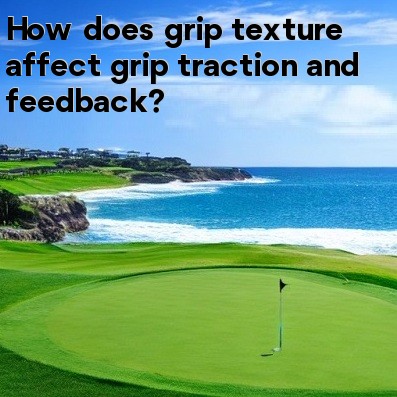
Grip Texture and its Impact on Grip Traction and Feedback in Golf
When it comes to playing golf, one key aspect that often gets overlooked is the importance of grip texture. The texture of a golf grip can significantly affect the grip traction and feedback experienced by the golfer during their swing. In this article, we will delve into the various ways grip texture can impact your performance on the course.
Grip Traction
The primary purpose of grip texture is to provide traction between the golfer's hands and the club. A grip with a textured surface enhances friction and allows for a more secure hold on the club. This prevents the club from slipping or twisting in the hands during the swing.
A rougher texture, such as a corded or ribbed grip, offers excellent traction. It helps golfers maintain a firm grip, even in wet or sweaty conditions. These grips are highly recommended for individuals who have a tendency to grip the club too tightly and those who play in climates with high humidity.
On the other hand, a smoother texture provides less traction. This type of grip, often referred to as a velvet or rubber grip, is more commonly used by golfers who have a lighter grip pressure or prefer a softer feel. It is important to note that these grips may not perform as well in inclement weather conditions or for golfers with sweaty hands.
Grip Feedback
The texture of a golf grip also plays a crucial role in providing feedback to the golfer. Feedback refers to the information transmitted from the club to the golfer's hands during the swing, allowing them to make necessary adjustments to their technique.
A grip with more texture, such as one with corded or ribbed patterns, provides enhanced feedback. The rough surface increases the golfer's ability to sense the position of the clubhead throughout the swing, enabling them to make corrections in real-time. Additionally, these grips typically have distinct ridges that provide a tactile response, enhancing feedback further.
Conversely, grips with less texture offer reduced feedback. The smoother surface of velvet or rubber grips dampens vibrations and lessens the sensation between the club and the golfer's hands. This can make it more challenging for golfers to have a precise feel for the clubhead, especially when it comes to fine-tuning their shots.
Choosing the Right Grip Texture
The choice of grip texture ultimately depends on the golfer's preference and playing conditions. Golfers who prioritize traction and feedback may opt for a more textured grip. Corded or ribbed grips are excellent choices for those who prefer a firmer hold and need additional help in maintaining control of the club.
On the other hand, golfers seeking a softer feel and less feedback may prefer a smoother grip. Velvet or rubber grips provide a comfortable touch and are suitable for individuals with a light grip or specific hand conditions.
In conclusion, grip texture has a significant impact on grip traction and feedback in golf. The right grip texture can enhance a golfer's control, stability, and ability to make necessary adjustments during the swing. Understanding the different textures available and choosing the one that best suits your needs will undoubtedly contribute to improved performance on the golf course.





